Four months ago, you could barely give your shares of ZIOPHARM Oncology Inc. (NASDAQ:ZIOP) away. The company announced s on Tuesday, March 26th, that its sarcoma drug Palifosfamide had failed to meet its Phase 3 goals. Shares of ZIOP plunged from $5.13 to $1.82 in a mere day, and were trading as low as $1.51 a week and a half later.
For many traders, that big post-drug-failure selloff would be enough to mentally put ZIOP on the shelf and never consider it again. Veteran traders, however (and biotech traders in particular), will know that most investors often have a tendency to over-react and overdo things. That's almost always a temporary situation though; stocks generally recover from such drubbings. That rebound is often a trade-worthy move too. In fact, ZIOPHARM Oncology is falling right in line with that norm.
Hot Biotech Stocks To Buy For 2015: NeoStem Inc (NBS)
NeoStem, Inc., incorporated on September 18, 1980, operates in cellular therapy industry. Cellular therapy addresses the process by which new cells are introduced into a tissue to prevent or treat disease, or regenerate damaged or aged tissue, and consists of a separate therapeutic technology platform in addition to pharmaceuticals, biologics and medical devices. The Company�� business model includes the development of novel cell therapy products, as well as operating a contract development and manufacturing organization (CDMO) providing services to others in the regenerative medicine industry. Progenitor Cell Therapy, LLC, the Company�� wholly owned subsidiary (PCT), is a CDMO in the cellular therapy industry. PCT has provided pre-clinical and clinical current Good Manufacturing Practice (cGMP) development and manufacturing services to over 100 clients advancing regenerative medicine product candidates through rigorous quality standards all the way through to human testing.
PCT has two cGMP, cell therapy research, development, and manufacturing facilities in New Jersey and California, serving the cell therapy community with integrated and regulatory compliant distribution capabilities. Its core competencies in the cellular therapy industry include manufacturing of cell therapy-based products, product and process development, cell and tissue processing, regulatory support, storage, distribution and delivery and consulting services. The Company�� wholly-owned subsidiary, Amorcyte, LLC (Amorcyte) is developing its own cell therapy, AMR-001, for the treatment of cardiovascular disease. AMR-001 represents its clinically advanced therapeutic product candidate and enrollment for its Phase II PreSERVE clinical trial to investigate AMR-001's safety and efficacy in preserving heart function after a heart attack in a particular type of post Acute Myocardial Infarction (AMI) patients.
Through the Company�� subsidiary, Athelos Corporation (Athelos), the Company is collaborating w! ith Becton-Dickinson in early stage clinical development of a therapy utilizing T-cells, collaborating for autoimmune and inflammatory conditions, including but not limited to, graft vs. host disease, type 1 diabetes, steroid resistant asthma, lupus, multiple sclerosis and solid organ transplant rejection. The Company�� pre-clinical assets include its Very Small Embryonic Like (VSEL) Technology platform. The Company has basic research and development capabilities, manufacturing facilities on both the east and west coast of the United States.
Advisors' Opinion: - [By Roberto Pedone]
Another under-$10 biopharmaceutical player that's starting to trend within range of triggering a big breakout trade is Neostem (NBS), engages in the development of proprietary cell therapy products. This stock has been hit hard by the sellers during the last three months, with shares off by 22%.
If you take a look at the chart for Neostem, you'll notice that this stock has recently spiked higher back above both its 50-day moving average at $6.41 and its 200-day moving average of $6.60 a share. This move has also pushed shares of NBS back above some near-term overhead resistance levels at $6.57 to $6.98 a share. That move is quickly pushing NBS within range of triggering another breakout trade above some key near-term overhead resistance.
Market players should now look for long-biased trades in NBS if it manages to break out above some near-term overhead resistance at $7.22 a share with high volume. Look for a sustained move or close above that level with volume that hits near or above its three-month average action 327,514 shares. If that breakout triggers soon, then NBS will set up to re-fill some of its previous gap down zone from October that started just above $8 a share. If that that gap gets filled with volume, then NBS could easily tag its next major overhead resistance levels at $9 to $9.50 a share, or even its 52-week high at $9.89 a share.
Traders can look to buy NBS off weakness to anticipate that breakout and simply use a stop that sits right below its 50-day moving average of $6.41 a share, or near more support at $6 a share. One can also buy NBS off strength once it takes out $7.22 a share with volume and then simply use a stop that sits a comfortable percentage from your entry point.
Hot Biotech Stocks To Buy For 2015: Insys Therapeutics Inc (INSY)
Insys Therapeutics, Inc., incorporated on June 15, 1990, is a pharmaceutical company that develops and seeks to commercialize pharmaceutical products that target the unmet needs of cancer patients, with an initial focus on cancer-supportive care. The Company�� pharmaceuticals portfolio consists of one approved product and a number of product candidates targeting cancer-supportive care and cancer therapy. The Company�� product candidate includes Subsys, Dronabinol SG Capsule, Dronabinol RT Capsule, Dronabinol Oral Solution, Dronabinol Inhalation Device, and Dronabinol IV Solution. The Company is also developing cancer therapeutics, which is LEP-ETU, a formulation of paclitaxel, the active ingredient in the cancer drugs Taxol and Abraxane. On August 19, 2011, the Food & Drug Administration (FDA) approved its Dronabinol SG Capsule product, a generic equivalent to Marinol, for the treatment of chemotherapy induced nausea and vomiting (CINV), and anorexia associated with weight loss in patients with acquired immune deficiency syndrome (AIDS).
Subsys
The Company's Subsys is a single-use product that delivers fentanyl, an opioid analgesic, in seconds for transmucosal absorption underneath the tongue. Subsys is a transmucosal product to show pain relief when measuring the sum of pain intensity difference at five minutes in a Phase 3 breakthrough cancer pain (BTCP) clinical trial using fentanyl.
Dronabinol Product Family
The Company has an approved dronabinol product and is developing several dronabinol product candidates for the treatment of CINV and appetite stimulation in patients with AIDS, as well as other indications where dronabinol could have potential therapeutic benefits. Dronabinol, the active ingredient in Marinol, is a synthetic cannabinoid whose chemical name is delta-9-tetrahydrocannabinol (THC). Its portfolio consists of its Dronabinol SG Capsule product and Dronabinol RT Capsule product candidate, which are intended to be generic equi! valents to Marinol, in addition to three formulations, including Dronabinol Oral Solution. Dronabinol SG Capsule is a dronabinol soft gelatin capsule intended to be a generic equivalent to Marinol. Dronabinol RT Capsule is a dronabinol soft gel capsule that is stable at room temperature. Dronabinol Oral Solution is a ynthetic THC in an oral liquid formulation.
Cancer Therapeutics
In addition to its cancer-supportive care products, the Company intends to develop cancer therapeutics targeting limitations of existing commercial products. LEP-ETU, it advanced cancer therapeutic, is a NeoLipid liposomal, or microscopic membrane-like structure created from lipids, formulation that incorporates paclitaxel. LEP-ETU completed a Phase 2 clinical trial of 70 patients with metastatic breast cancer.
The Company competes with Cephalon, Inc., BioDelivery Sciences International, Inc., ProStrakan Group plc, Nycomed International Management GmbH, Archimedes Pharma Ltd., TEVA Pharmaceuticals USA, Watson Pharmaceuticals, Inc., AcelRx Pharmaceuticals, Inc., Akela Pharma Inc., Abbott Laboratories, Pharmaceutical International, Inc., Par Pharmaceutical Companies Inc., sanofi-aventis, Eisai Inc., Helsinn Group, Roche Holding AG, Par Pharmaceutical Companies Inc., GlaxoSmithKline plc, ProStrakan Group plc, Merck & Co, GW Pharmaceutical, A.P. Pharma, Inc., Aphios Corp., Roche Holding, Tesaro, Inc., Cornerstone Pharmaceutical, Inc., Bristol-Myers Squibb, Celgene Corporation, Laboratories, Amgen Inc., AstraZeneca PLC., Bayer AG, Biogen Idec Inc., Eisai Co., Ltd., F. Hoffmann- LaRoche Ltd., Johnson and Johnson, Merck and Co., Inc., Novartis AG, Onyx Pharmaceuticals Inc., Pfizer Inc., and Takeda Pharmaceutical Co. Ltd.
Advisors' Opinion: - [By Traders Reserve]
For example at the end of August, I found a little stock called INSYS Therapeutics (INSY) The company showed up as a top-rated stock using a stock-rating system based on something I call the P/E Gap ��the difference between a stock�� P/E ratio and its expected profit growth rate.
- [By Chris Preston]
INSYS Therapeutics (INSY) is one recent IPO that jumps out. The Arizona-based pharmaceutical company markets a synthetic marijuana drug to treat cancer pain. It went public in May at $8 per share. It opened at over $46 per share.
- [By David Zeiler]
2. Insys Therapeutics Inc. (Nasdaq: INSY): Insys is a biotech seeking to capitalize on the growing interest in medical marijuana by using a generic form of THC to create drugs to treat cancer pain. INSY had its IPO May 2 with an offer price of $8 a share. The stock rose 19.75% on its first day of trading. But investors really warmed up to Insys later; it currently trades at about $37.54, a 369.25% increase over the offer price.
- [By Jake L'Ecuyer]
INSYS Therapeutics (NASDAQ: INSY) was also down, falling 15.14 percent to $27.73 after news broke that a doctor had fraudulently prescribed its drug Subsys.
Best European Stocks To Watch Right Now: Synergy Pharmaceuticals Inc (SGYP)
Synergy Pharmaceuticals, Inc., incorporated on February 11, 1992, is a biopharmaceutical company focused primarily on the development of drugs to treat gastrointestinal (GI), disorders and diseases. The Company�� lead product candidate is plecanatide, a guanylyl cyclase C (GC-C), receptor agonist, to treat GI disorders, primarily chronic constipation (CC), and constipation-predominant-irritable bowel syndrome (IBS-C). It is also developing SP-333, the second generation GC-C receptor agonist for the treatment of gastrointestinal inflammatory diseases, such as ulcerative colitis (UC). The Company�� active pharmaceutical ingredients (APIs) and the final formulated drug products are manufactured for it by third party contractors.
As of December 31, 2011, the Company was developing plecanatide, a synthetic hexadecapeptide designed to mimic the actions of the GI hormone uroguanylin, for the treatment of CC and IBS-C. Plecanatide is an agonist of GC-C receptor. As of December 31, 2011, the Company was dosing patients in an 800-patient Phase II/III clinical trial of plecanatide to treat. It is also developing a second generation GC-C receptor analog, SP-333, which is in pre-clinical development for the treatment of gastrointestinal inflammatory diseases. SP-333 is a synthetic analog of uroguanylin, a natriuretic hormone.
The Company competes with Ironwood Pharmaceuticals, Inc., Forest Laboratories, Inc., Takeda Pharmaceuticals America, Inc., Sucampo Pharmaceuticals, Inc., Salix Pharmaceuticals, Inc. and Shire Plc.
Advisors' Opinion: Hot Biotech Stocks To Buy For 2015: Epizyme Inc (EPZM)
Epizyme, Inc., incorporated on November 1, 2007, is a clinical stage biopharmaceutical company that discovers, develops and plans to commercialize personalized therapeutics for patients with genetically defined cancers. The Company systematically identify the genetic alterations that create cancer causing genes, called oncogenes, select patients in whom the identified genetic alteration is found and then design small molecule therapeutics to inhibit the oncogene. The clinical development plan for each of its product candidates is directed towards patients with a particular genetically defined cancer.The Company is conducting a Phase I clinical trial of its advanced product candidate, EPZ-5676, an inhibitor targeting the DOT1L HMT, for the treatment of mixed lineage leukemia (MLL-r). The Company has identified its two lead product candidates using its product platform.
EPZ-5676-DOT1L Inhibitor
EPZ-5676 is an intravenously administered small molecule inhibitor of DOT1L. The Company is developing EPZ-5676 for the treatment of MLL-r, an aggressive subtype of the two most common forms of acute leukemia, ALL and AML. Patients with MLL-r are routinely diagnosed with existing technologies that are commonly used in clinical setting. The Company�� Phase 1 clinical trial of EPZ-5676 is an open label, multicenter trial that has two phases.
EPZ-6438-EZH2 Inhibitor
The Company is developing EPZ-6438 as an orally available small molecule inhibitor of EZH2 for the treatment of non-Hodgkin lymphoma patients who have an oncogenic point mutation in EZH2. EZH2 is an HMT that can become oncogenic and cause non-Hodgkin lymphoma and a range of other solid tumors. Two types of non-Hodgkin lymphoma, diffuse large B-cell lymphoma of germinal-center origin, or DLBCL, and follicular lymphoma, or FL, are particularly associated with an EZH2 point mutation. There are no therapies approved specifically for the treatment of cancer associated with an EZH2 point mutation.
Advisors' Opinion: - [By Jake L'Ecuyer]
Epizyme (NASDAQ: EPZM) shot up 54.63 percent to $31.70 after the company reported two major milestone achievements. It announced the achievement of a proof of concept milestone in the EPZ-5676 DOT1L inhibitor clinical program.
- [By Laura Brodbeck]
Friday
Earnings Expected From: Epizyme (NASDAQ: EPZM), Dyax Corp (NASDAQ: DYAX) Economic Releases Expected: ��German GDP, German business climate index, Italian retail sales. Get all the #premarket info by listening in to Benzinga's morning show at 8:00 am EST Monday-Friday!
Hot Biotech Stocks To Buy For 2015: Tauriga Sciences Inc (TAUG)
Tauriga Sciences, Inc., formerly Immunovative, Inc., incorporated on April 18, 2001, is a development-stage company. The Company along with Constellation Diagnostics, Inc. (Constellation) focuses on establishing a joint venture partnership to develop and commercialize a imaging-based diagnostic technology for use in predictive and preventative oncology.
The Company has rights to commercialize AlloStim and AlloVax. As of March 31, 2013 the Company did not have any revenues.
Advisors' Opinion: - [By Peter Graham]
Small cap health care or personal care stocks Axxess Pharma Inc (OTCMKTS: AXXE), Radiant Creations Group Inc (OTCBB: RCGP) and Tauriga Sciences Inc (OTCMKTS: TAUG) have recently been attracting attention in various investment newsletters or in investor alerts. Some of the attention may have to do with paid promotions that two of these small caps have been the subject of. So how healthy are these three small cap health care or personal care orientated stocks? Here is a checkup:
Hot Biotech Stocks To Buy For 2015: Sucampo Pharmaceuticals Inc (SCMP)
Sucampo Pharmaceuticals, Inc., incorporated on December 9, 2008, is a global biopharmaceutical company focused on research, discovery, development and commercialization of drugs based on ion channel activators known as prostones. The Company�� prostone-based compounds target the ClC-2 and big potassium (BK), ion channels. It is focused on developing prostones to treat gastrointestinal, ophthalmic, neurologic, and oncology-based inflammatory disorders, and is also considering other therapeutic applications of its drug technology. The Company�� products include AMITIZA (lubiprostone) and RESCULA (unoprostone isopropyl).
AMITIZA
The Company�� AMITIZA is being marketed in the United States for three gastrointestinal indications under a license agreement, or the Takeda Agreement, with Takeda Pharmaceutical Company Limited, or Takeda. The three gastrointestinal indications include chronic idiopathic constipation (CIC), in adults, irritable bowel syndrome with constipation (IBS-C), in adult women, and opioid-induced constipation (OIC), in adult patients with chronic, non-cancer pain. AMITIZA for OIC received approval from the United States Food and Drug Administration (FDA), in April 2013. In Japan, AMITIZA is marketed under a license, commercialization and supply agreement, or the Abbott Agreement, with Abbott Japan Co. Ltd. (Abbott), for the gastrointestinal indication of chronic constipation (CC), excluding constipation caused by organic diseases. In Switzerland, the Company is marketing AMITIZA.
RESCULA
The Company holds license agreements for RESCULA in the United States and Canada and the rest of the world, with the exception of Japan, Korea, Taiwan and the People�� Republic of China. The Company is commercializing RESCULA (unoprostone isopropyl ophthalmic solution) 0.15% for the lowering of intraocular pressure (IOP), in patients with open-angle glaucoma or ocular hypertension in the United States. RESCULA may be used as an agent or concomit! antly with other topical ophthalmic drug products to lower intraocular pressure. RESCULA is a BK channel activator and has a different mechanism of action than other IOP lowering agents on the market.
Advisors' Opinion: - [By Roberto Pedone]
Another under-$10 stock that's starting to trend within range of triggering a major breakout trade is Sucampo Pharmaceuticals (SCMP), which is engaged in the discovery, development and commercialization of proprietary drugs based on prostones, and other novel drug technologies. This stock is off to a decent start in 2013, with shares up by 26%.
If you take a look at the chart for Sucampo Pharmaceuticals, you'll notice that this stock has been downtrending badly for the last four months, with shares dumping hard from its high of $10.48 to its recent low of $5.40 a share. During that downtrend, shares of SCMP have been consistently making lower highs and lower lows, which is bearish technical price action. That said, the downside volatility for SCMP looks to be over in the short-term since the stock has started to reverse its downtrend and enter an uptrend. That reverse is quickly pushing shares of SCMP within range of triggering a major breakout trade above a key downtrend line.
Traders should now look for long-biased trades in SCMP if it manages to break out above some near-term overhead resistance levels at $6.33 to $6.66 a share with high volume. Look for a sustained move or close above those levels with volume that hits near or above its three-month average action of 115,383 shares. If that breakout triggers soon, then SCMP will set up to re-test or possibly take out its next major overhead resistance levels at $7.09 to $7.67 a share. Any high-volume move above those levels will then give SCMP a chance to tag $8 to $9 a share.
Traders can look to buy SCMP off weakness to anticipate that breakout and simply use a stop that sits right below some key near-term support levels at $5.58 to $5.40 a share. One can also buy SCMP off strength once it clears those breakout levels with volume and then simply use a stop that sits a comfortable percentage from your entry point.
- [By James Brumley]
Still, for the nimble who know when to get out, OREX is one of the few cheap stocks worth a closer look.
Sucampo Pharmaceuticals (SCMP) Finally, though the price of $7.60 clearly qualifies it as one pf the cheapest of the cheap stocks out there in the pharmaceutical world, that’s not the reason Sucampo Pharmaceuticals (SCMP) may be worth a look here. It’s the 30% slide we’ve seen SCMP stock suffer since peaking in mid-January. It’s not a pullback that’s bound to go unchallenged by the bulls.
Hot Biotech Stocks To Buy For 2015: Oramed Pharmaceuticals Inc (ORMP)
Oramed Pharmaceuticals Inc., incorporated on March 10, 2011, is a development-stage pharmaceutical company. The Company is engaged in the research and development of pharmaceutical solutions, including an orally ingestible insulin capsule or tablet to be used for the treatment of individuals with diabetes, use of orally ingestible capsules, tablets or pills for delivery of other polypeptides. The Company owns oral dosage form drug portfolio, it is, on an on-going basis, considering in-licensing and other means of obtaining additional technologies to complement and/or expand the product portfolio. The Company�� products include ORMD-0801 - Oral Insulin Capsule and ORMD-0901 - Oral Exenatide.
The Company focuses to conduct research and development on the technology covered by the patent application Methods and Composition for Oral Administration of Proteins. Through its research and development efforts, it focuses to develop an oral dosage form that will withstand the chemical environment of the stomach and intestines and will be effective in delivering active insulin for the treatment of diabetes. It intends to conduct the clinical trials to file an Investigational New Drug (IND), application with the United States Food and Drug Administration (FDA). It also focuses to conduct research and development by deploying its drug delivery technology for the delivery of other polypeptides in addition to insulin, and to develop other pharmaceutical products.
Advisors' Opinion: - [By Ben Levisohn]
Oramed Pharmaceuticals (ORMP) has dropped 19% to $12.11 after the company said it would sell nearly 1.6 million shares of stock for $10 a share.
BP plc (BP) has fallen 0.7% to $47.24 after a U.S. judge refused its request to revise the way damages from the Deepwater Horizon oil spill are calculated.
- [By Lisa Levin]
Oramed Pharmaceuticals (NASDAQ: ORMP) shares moved up 15.68% to $17.85. The volume of Oramed Pharmaceuticals shares traded was 971% higher than normal. Oramed received patent allowance in Israel, Australia for platform technology in oral delivery of proteins.
Hot Biotech Stocks To Buy For 2015: Cannabis Science Inc (CBIS)
Cannabis Science, Inc., incorporated on May 4, 2007, is a development-stage company. The Company is engaged in the creation of cannabis-based medicines, both with and without psychoactive properties, to treats disease and the symptoms of disease, as well as for general health maintenance. On February 9, 2012, the Company acquired GGECO University, Inc. (GGECO). On March 21, 2012, the Company acquired Cannabis Consulting Inc. (CCI Group).
The Company is engaged in medical marijuana research and development. The Company works with world authorities on phytocannabinoid science targeting critical illnesses, and adheres to scientific methodologies to develop, produce, and commercialize phytocannabinoid-based pharmaceutical products.
Advisors' Opinion: - [By John Udovich]
Small cap marijuana stocks Medical Marijuana Inc (OTCMKTS: MJNA), Cannabis Science Inc (OTCMKTS: CBIS), Medbox Inc (OTCMKTS: MDBX), Growlife Inc (OTCBB: PHOT) and HEMP, Inc (OTCMKTS: HEMP) were all surging by double digits yesterday thanks in part to legal sales of pot beginning in Colorado.
Hot Biotech Stocks To Buy For 2015: Rosetta Genomics Ltd (ROSG)
Rosetta Genomics Ltd., incorporated on March 9, 2000, is seeking to develop and commercialize diagnostic tests based on discovered group of genes known as microRNAs. The Company has established a clinical laboratory improvement amendment (CLIA)-certified laboratory in Philadelphia, which enables it to develop, validate and commercialize its own diagnostic tests applying its microRNA technology. In July 2011, the Company launched its fifth product - miRview lung. As of December 31, 2011, the Company launched five tests based on its five microRNA technologies: miRview mets; miRview mets2; miRview squamous; miRview meso, and miRview lung.
Rimonim Consortium
In January 2011, the Company joined the Rimonim Consortium, which is supported by the Office of the Chief Scientist at the Ministry of Industry, Trade and Labor of the State of Israel, or the OCS. The purpose of the consortium is to develop RNA interference, or RNAi, -based therapeutics.
Rosetta Green
Rosetta Green Ltd. is an Israeli subsidiary of the Company, which was established to leverage its capabilities into the areas of cleantech and plant biotech by using its microRNA technologies to develop plants and algae more suitable for various applications, such as feedstocks for biofuels and agriculture. Research at the Rosetta Green project has been shown to develop algal strains with oil content, to discover potential novel microRNAs from commercially-important algae and to identify drought-regulated microRNAs in plants.
The Company competes with Pathwork Diagnostics, Inc., Biotheranostics, Inc., Combimatrix Corporation, Alnylam Pharmaceuticals, Inc., Asuragen Inc., Exiqon A/S, Life Technologies Corporation, Isis Pharmaceuticals, Merck & Co., Inc., Santaris Pharma A/S, and Regulus Therapeutics.
Advisors' Opinion: - [By Peter Graham]
The Q3 2014 earnings report for molecular diagnostic company Myriad Genetics, Inc (NASDAQ: MYGN) is due out after the market closes on Tuesday and things could get ugly since unlike potential diagnostic stock peers such as Rosetta Genomics Ltd (NASDAQ: ROSG) and mid cap diagnostic stock Quest Diagnostics Inc (NYSE: DGX), it�� the most shorted stock on the Nasdaq with short interest of 52.07%. Aside from the Myriad Genetics earnings report, it should be said that Rosetta Genomics Ltd last reported earnings on March 31st and those�earnings were for the full year 2013 while�Quest Diagnostics reported Q1 2014 earnings on April 24th that were a disappointment due to restructuring costs and harsh winter weather. However, Myriad Genetics has been the more interesting stock as Medicare reimbursement rate increases and the lost of a court bid to block competition while a patent-infringement case is pending have sent its shares all over the place.
- [By John Udovich]
On Tuesday, small cap cancer diagnostic stock Myriad Genetics, Inc (NASDAQ: MYGN) jumped 11.42% in one day, meaning its worth taking a closer look at the stock along with the performance of small cap cancer diagnostic stocks like Rosetta Genomics Ltd (NASDAQ: ROSG) and�Genomic Health, Inc (NASDAQ: GHDX) plus mid cap diagnostic stock Quest Diagnostics Inc (NYSE: DGX). I should mention that we have had�Myriad Genetics in our SmallCap Network Elite Opportunity (SCN EO) portfolio since February 5th and we are already up 18.50%���a nice return in just two weeks time.
Hot Biotech Stocks To Buy For 2015: Cellular Dynamics International Inc (ICEL)
Cellular Dynamics International, Inc., incorporated on November 16, 2007, develops and manufactures fully functioning human cells in industrial quantities to precise specifications. The Company�� iCell Operating System (iCell O/S) includes true human cells in multiple cell types (iCell products), human induced pluripotent stem cells (iPSCs) and custom iPSCs and iCell products (MyCell products). Customers use its iCell O/S products, among other purposes, for drug discovery and screening; to test the safety and efficacy of their small molecule and biologic drug candidates; for stem cell banking; and in researching cellular therapeutics. The Company�� iCell product line includes four different cell types: cardiomyocytes, neurons, hepatocytes and endothelial cells. The Company is actively developing an additional seven different cell types. iCell products are a consumable designed to be used once and then reordered.
The Company manufactures its iCell products from its iPSCs. An iPSC is a cell that has the ability both to replicate indefinitely and to be transformed into any cell type in the human body. The Company�� iCell O/S consists of six products, which include iCell Cardiomyocytes, iCell Neurons, iCell Endothelial Cells, iCell Hepatocytes and MyCell.
Advisors' Opinion: - [By John Udovich]
Stem cells may not be in the news much�as the sector has moved beyond the use of embryotic�ones, but small cap stem cell stocks Cellular Dynamics International Inc (NASDAQ: ICEL), International Stem Cell Corp (OTCMKTS: ISCO) and BioRestorative Therapies (OTCBB: BRTX) have been fairly active over the past several trading days as ICEL went public, ISCO raised additional funding and BRTX grabbed more attention:





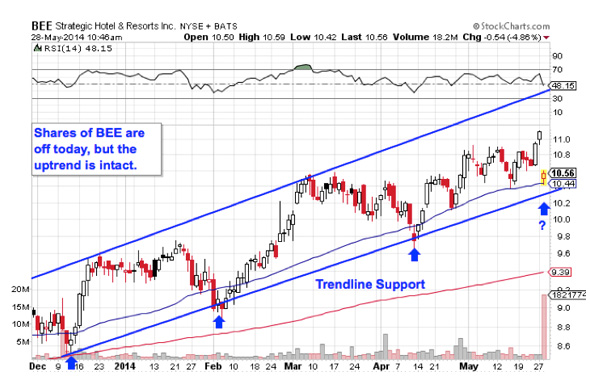
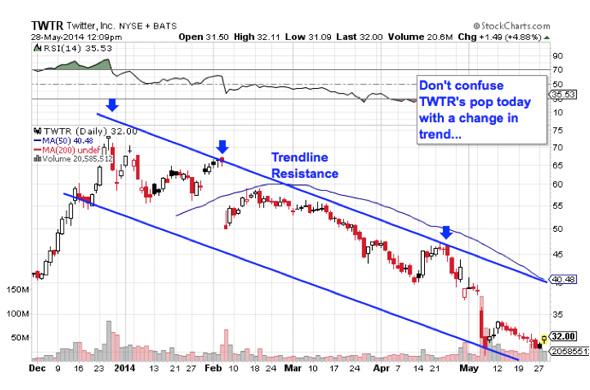
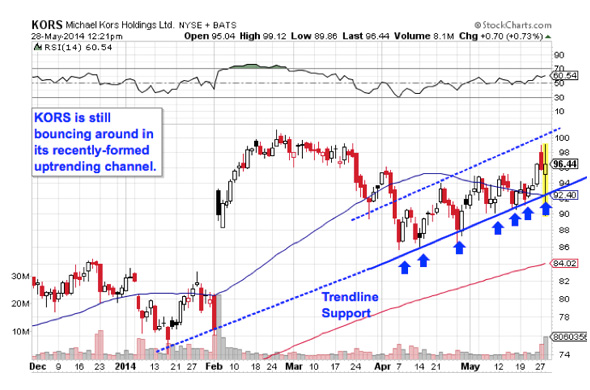
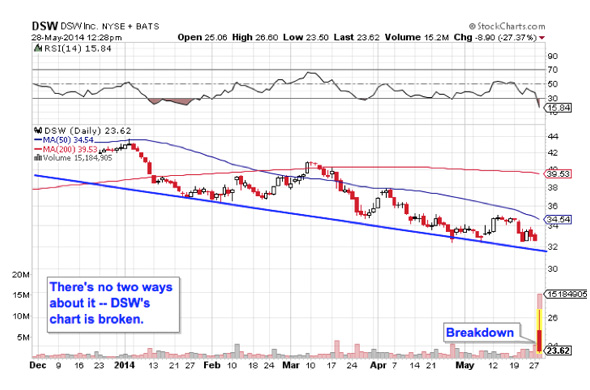
 Justin Sullivan/Getty Images By STEPHEN OHLEMACHER Social Security made $1.3 billion in potentially improper disability payments to people who had jobs when they were supposed to be unable to work, congressional investigators said in a report Friday. The Government Accountability Office estimated that 36,000 workers got improper payments from December 2010 to January 2013. The numbers represent less than 1 percent of beneficiaries and less than 1 percent of disability payments made during the time frame. But GAO said the overpayments reveal weaknesses in Social Security's procedures for policing the system. "The report lays out clear, common-sense steps that the agency can and should take in order to avoid improper payments," said Sen. Tom Carper, D-Del., chairman of the Senate Homeland Security and Governmental Affairs Committee. "However, if we're serious about preventing waste and fraud and ensuring that these critical benefits get to the people who need and deserve them, Congress must also do its part and provide needed resources and access to basic anti-fraud data to the Social Security Administration." The Social Security Administration said its accuracy rate for disability payments is more than 99 percent. But the agency noted that even small errors translate into big numbers. "We are planning to do an investigation, and we will recoup any improper payments from beneficiaries," Social Security spokesman Mark Hinkle said. "It is too soon to tell what caused these overpayments, but if we determine that fraud is involved, we will refer these cases to our office of the inspector general for investigation." More than 8.2 million disabled workers received disability payments in December 2010, a figure that has grown to nearly 9 million. Last year, the agency paid out $137 billion in disability payments. Before people can receive disability benefits, there is a 5-month waiting period in which they can, in general, earn no more than about $1,000 a month. The waiting period is to ensure that beneficiaries have long-term disabilities. Using a federal wage database, investigators checked whether a sample of disability beneficiaries had worked and earned significant wages during the waiting period, the report said. They found that most of the improper payments went to people who worked during the five months they waited for payments to begin. Once people start receiving benefits, they can return to work and still get benefits during a trial work period, in an attempt to re-enter the workforce. Using the same wage database, investigators checked whether another sample of disability beneficiaries earned significant wages after their trial work period had ended, the report said. Based on their findings, the GAO estimated the amount of improper payments and the number of people receiving them. Citing a potential weakness, the report said Social Security might not detect a person who worked during the waiting period if the period started in one year and ended in another. For example, if Social Security starts paying benefits in February, the agency might not detect significant wages earned the previous November because they weren't earned in the same year that benefits were awarded, the report said. In a written response to the report, the Social Security Administration agency questioned whether GAO overestimated the amount of overpayments. The agency said investigators did not determine whether the work activity qualified as an unsuccessful attempt to return to work, or whether there were any other special circumstances. The report comes as Social Security's disability program faces a financial crisis. If Congress doesn't act, the trust fund that supports the disability program will run out of money in 2016, according to projections by Social Security's trustees. At that point, the system will collect only enough money in payroll taxes to pay 80 percent of benefits, triggering an automatic 20 percent cut in benefits. Congress could redirect money from Social Security's much bigger retirement program to shore up the disability program, as it did in 1994. But that would worsen the finances of the retirement program, which is facing its own long-term financial problems. "This report demonstrates just how little importance the Social Security Administration places on policing its disability rolls," said Sen. Tom Coburn of Oklahoma, the ranking Republican on the Senate Homeland Security and Governmental Affairs Committee. "SSA has known for years that it could prevent millions of dollars in improper disability payments using quarterly wage records, but chose not to."
Justin Sullivan/Getty Images By STEPHEN OHLEMACHER Social Security made $1.3 billion in potentially improper disability payments to people who had jobs when they were supposed to be unable to work, congressional investigators said in a report Friday. The Government Accountability Office estimated that 36,000 workers got improper payments from December 2010 to January 2013. The numbers represent less than 1 percent of beneficiaries and less than 1 percent of disability payments made during the time frame. But GAO said the overpayments reveal weaknesses in Social Security's procedures for policing the system. "The report lays out clear, common-sense steps that the agency can and should take in order to avoid improper payments," said Sen. Tom Carper, D-Del., chairman of the Senate Homeland Security and Governmental Affairs Committee. "However, if we're serious about preventing waste and fraud and ensuring that these critical benefits get to the people who need and deserve them, Congress must also do its part and provide needed resources and access to basic anti-fraud data to the Social Security Administration." The Social Security Administration said its accuracy rate for disability payments is more than 99 percent. But the agency noted that even small errors translate into big numbers. "We are planning to do an investigation, and we will recoup any improper payments from beneficiaries," Social Security spokesman Mark Hinkle said. "It is too soon to tell what caused these overpayments, but if we determine that fraud is involved, we will refer these cases to our office of the inspector general for investigation." More than 8.2 million disabled workers received disability payments in December 2010, a figure that has grown to nearly 9 million. Last year, the agency paid out $137 billion in disability payments. Before people can receive disability benefits, there is a 5-month waiting period in which they can, in general, earn no more than about $1,000 a month. The waiting period is to ensure that beneficiaries have long-term disabilities. Using a federal wage database, investigators checked whether a sample of disability beneficiaries had worked and earned significant wages during the waiting period, the report said. They found that most of the improper payments went to people who worked during the five months they waited for payments to begin. Once people start receiving benefits, they can return to work and still get benefits during a trial work period, in an attempt to re-enter the workforce. Using the same wage database, investigators checked whether another sample of disability beneficiaries earned significant wages after their trial work period had ended, the report said. Based on their findings, the GAO estimated the amount of improper payments and the number of people receiving them. Citing a potential weakness, the report said Social Security might not detect a person who worked during the waiting period if the period started in one year and ended in another. For example, if Social Security starts paying benefits in February, the agency might not detect significant wages earned the previous November because they weren't earned in the same year that benefits were awarded, the report said. In a written response to the report, the Social Security Administration agency questioned whether GAO overestimated the amount of overpayments. The agency said investigators did not determine whether the work activity qualified as an unsuccessful attempt to return to work, or whether there were any other special circumstances. The report comes as Social Security's disability program faces a financial crisis. If Congress doesn't act, the trust fund that supports the disability program will run out of money in 2016, according to projections by Social Security's trustees. At that point, the system will collect only enough money in payroll taxes to pay 80 percent of benefits, triggering an automatic 20 percent cut in benefits. Congress could redirect money from Social Security's much bigger retirement program to shore up the disability program, as it did in 1994. But that would worsen the finances of the retirement program, which is facing its own long-term financial problems. "This report demonstrates just how little importance the Social Security Administration places on policing its disability rolls," said Sen. Tom Coburn of Oklahoma, the ranking Republican on the Senate Homeland Security and Governmental Affairs Committee. "SSA has known for years that it could prevent millions of dollars in improper disability payments using quarterly wage records, but chose not to." 

 disneyworld.disney.go.com We may be 19 months away from "Star Wars: Episode VII," but it's not too soon to start generating buzz. Director J.J. Abrams announced last week that the film's production crew is teaming up with UNICEF for a contest that will land someone a part in the movie. It's part of the Star Wars: Force for Change campaign that aims to raise funds and awareness for community-building projects in impoverished nations. However, for Disney (DIS) -- the family entertainment giant that paid $4 billion for Lucasfilm two years ago -- this is just another way to keep building interest for a movie that fans have been waiting for since 2005, when the last film came out. Disney wanted to have the new film out by next summer. The folks working on the film wanted to hold out until the summer of 2016 to get everything right. They split the difference. It's coming out on Dec. 18, 2015. It's a foregone conclusion that this will be the hit of the 2015 holiday season. Disney just wants to make sure that it's even bigger than that. Use the Force, Walt Disney has big plans for the Star Wars franchise, and it's apparent to anyone visiting Disney's Hollywood Studios in Florida these days. Celebrities and costumed characters converge for several weekends through June 15. Star Wars Weekends has been an annual event for years before the Lucasfilm acquisition. The park features the Star Wars-themed Star Tours attraction, and it's had a solid relationship with creator George Lucas before cutting him a big check. However, Disney is ramping it up. Character meals -- a staple at Disney's theme parks and resort hotels, where guests pay a premium to dine alongside Mickey Mouse and other characters -- have taken a Star Wars spin at Disney's Hollywood Studios. At the Star Wars Dine-In Galactic Breakfast at the Sci-Fi Dine-In Theater Restaurant, Darth Vader, stormtroopers and other iconic characters visit the dining cars. At night, Jedi Mickey's Star Wars Dine at Hollywood & Vine is hosted by Disney characters decked out in Star Wars garb. Mickey Mouse is Luke Skywalker. Goofy is Darth Vader. Minnie Mouse is Princess Leia, hair buns and all. The meals -- $48 for breakfast or $56 for dinner -- sold out quickly. One could say that patrons are hungry, but Disney's hungry for more. The Dark Side Disney isn't afraid to cut a big check to get its hands on endearing and enduring characters. It has negotiated 10-figure deals for Pixar, Marvel and now Lucasfilm. If you're the owner of a popular character-rich franchise, Disney wants to talk to you. The Pixar and Marvel deals have already paid for themselves by opening up Disney to computer-rendered characters and comic book superheroes. Disney can still create the occasional in-house hit. "Frozen" recently became the highest-grossing animated film of all time. However, the one Disney movie that it has yet to topple is Marvel's "The Avengers." Lucasfilm will be carved out into more than just the final three Star Wars movies. There is already chatter of spinning off secondary characters into their own franchises. Luke Skywalker may have been shocked to learn who his father was, but there's no denying who the parent company of Star Wars is these days. Disney's a well-oiled media empire that can elevate an entertainment brand higher across its TV networks (such as ABC and ESPN), theme parks, retail stores, and even cruise ships. More from Rick Aristotle Munarriz
disneyworld.disney.go.com We may be 19 months away from "Star Wars: Episode VII," but it's not too soon to start generating buzz. Director J.J. Abrams announced last week that the film's production crew is teaming up with UNICEF for a contest that will land someone a part in the movie. It's part of the Star Wars: Force for Change campaign that aims to raise funds and awareness for community-building projects in impoverished nations. However, for Disney (DIS) -- the family entertainment giant that paid $4 billion for Lucasfilm two years ago -- this is just another way to keep building interest for a movie that fans have been waiting for since 2005, when the last film came out. Disney wanted to have the new film out by next summer. The folks working on the film wanted to hold out until the summer of 2016 to get everything right. They split the difference. It's coming out on Dec. 18, 2015. It's a foregone conclusion that this will be the hit of the 2015 holiday season. Disney just wants to make sure that it's even bigger than that. Use the Force, Walt Disney has big plans for the Star Wars franchise, and it's apparent to anyone visiting Disney's Hollywood Studios in Florida these days. Celebrities and costumed characters converge for several weekends through June 15. Star Wars Weekends has been an annual event for years before the Lucasfilm acquisition. The park features the Star Wars-themed Star Tours attraction, and it's had a solid relationship with creator George Lucas before cutting him a big check. However, Disney is ramping it up. Character meals -- a staple at Disney's theme parks and resort hotels, where guests pay a premium to dine alongside Mickey Mouse and other characters -- have taken a Star Wars spin at Disney's Hollywood Studios. At the Star Wars Dine-In Galactic Breakfast at the Sci-Fi Dine-In Theater Restaurant, Darth Vader, stormtroopers and other iconic characters visit the dining cars. At night, Jedi Mickey's Star Wars Dine at Hollywood & Vine is hosted by Disney characters decked out in Star Wars garb. Mickey Mouse is Luke Skywalker. Goofy is Darth Vader. Minnie Mouse is Princess Leia, hair buns and all. The meals -- $48 for breakfast or $56 for dinner -- sold out quickly. One could say that patrons are hungry, but Disney's hungry for more. The Dark Side Disney isn't afraid to cut a big check to get its hands on endearing and enduring characters. It has negotiated 10-figure deals for Pixar, Marvel and now Lucasfilm. If you're the owner of a popular character-rich franchise, Disney wants to talk to you. The Pixar and Marvel deals have already paid for themselves by opening up Disney to computer-rendered characters and comic book superheroes. Disney can still create the occasional in-house hit. "Frozen" recently became the highest-grossing animated film of all time. However, the one Disney movie that it has yet to topple is Marvel's "The Avengers." Lucasfilm will be carved out into more than just the final three Star Wars movies. There is already chatter of spinning off secondary characters into their own franchises. Luke Skywalker may have been shocked to learn who his father was, but there's no denying who the parent company of Star Wars is these days. Disney's a well-oiled media empire that can elevate an entertainment brand higher across its TV networks (such as ABC and ESPN), theme parks, retail stores, and even cruise ships. More from Rick Aristotle Munarriz




 Popular Posts: 5 Crash-Proof Dividend Stocks9 Cheap Stocks to Buy Now for $10 or LessTesla Stock Could Fall Even Lower on Battery Boondoggle Recent Posts: 11 Retailers to Dump Now Why You Don’t Have Enough Saved for Retirement JCPenney Rally Just a Head Fake – Don’t Buy JCP Stock View All Posts
Popular Posts: 5 Crash-Proof Dividend Stocks9 Cheap Stocks to Buy Now for $10 or LessTesla Stock Could Fall Even Lower on Battery Boondoggle Recent Posts: 11 Retailers to Dump Now Why You Don’t Have Enough Saved for Retirement JCPenney Rally Just a Head Fake – Don’t Buy JCP Stock View All Posts  First, we started the year with a spate of bad weather that depressed both hiring and spending trends. Then, after what seemed like a snap-back in March, we were greeted by a meager 0.1% rise in April retail sales according to the latest data.
First, we started the year with a spate of bad weather that depressed both hiring and spending trends. Then, after what seemed like a snap-back in March, we were greeted by a meager 0.1% rise in April retail sales according to the latest data. Returns since 1/1/14: -28% vs. 3% gains for the S&P 500.
Returns since 1/1/14: -28% vs. 3% gains for the S&P 500. Returns since 1/1/14: -24%
Returns since 1/1/14: -24%
 Returns since 1/1/14: -24%
Returns since 1/1/14: -24% Returns since 1/1/14: +13%
Returns since 1/1/14: +13% Returns since 1/1/14: -15%
Returns since 1/1/14: -15% Returns since 1/1/14: -2%
Returns since 1/1/14: -2% Returns since 1/1/14: -24%
Returns since 1/1/14: -24% Returns since 1/1/14: -23%
Returns since 1/1/14: -23% Returns since 1/1/14: -12%
Returns since 1/1/14: -12% Returns since 1/1/14: -32%
Returns since 1/1/14: -32%
 Installing a $3.2B thermostat
Installing a $3.2B thermostat 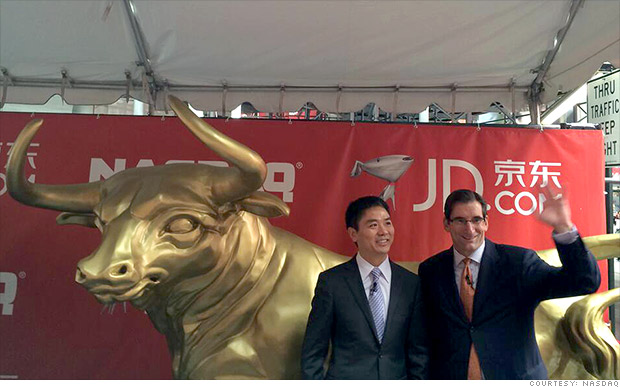
 Getty Images
Getty Images 
 Associated Press
Associated Press